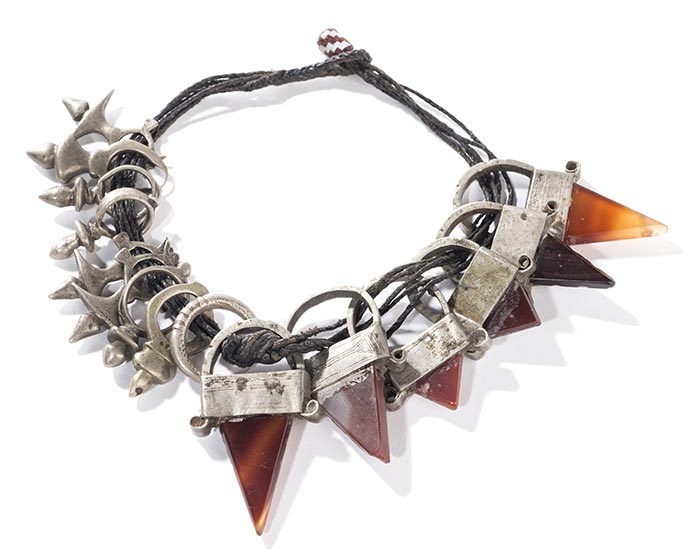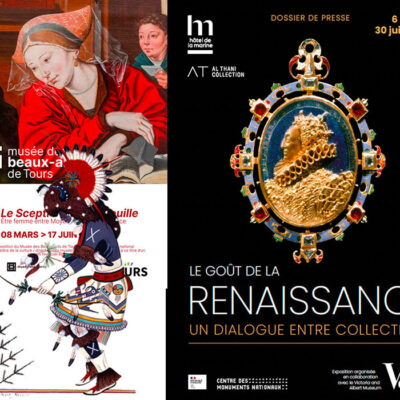My agenda
03 November 2017
Share
“Tuaregs” at the Musée des Confluences
This exhibition highlights the jewelry of the nomadic tribes of the Sahara. Often dismissed as worthless trinkets by the public, they are in fact rich in beauty.
The exhibition with its 280 objects is largely based on the donation of Jean Burner, an accountant in sub-Saharan Africa and the President of the Masnat association (which facilitates the settlement of Tuaregs from Niger). Anxious to preserve an aesthetic identity threatened with disappearance, Jean Burner went to local smiths in the second half of the 20th century and bought second-hand jewelry which was about to be melted down and recycled into new items.
A graphic aesthetic
The aesthetic of these pieces reflects the values of Tuareg society: simplicity and movement. With their triangles, squares and diamonds, most of these necklaces, rings and bracelets appeal first of all to the ear – they come to life because of the fringes, bells and other articulated elements that move when the wearer rides around by camel. “This evocation of the nomadic way of life is also reflected in the shatshat, the first jewels given to young girls, whose very name captures the sound of the pendants clinking against each other,” explains Marie Perrier, in charge of the museum’s collections.
The predominance of silver
Silver, obtained through melting European coins used for trade, reflects the same value system: it is precious without being ostentatious. It comes in rich and varied shades, ranging from red to yellow thanks to alloys with copper or brass. There are few stones except some jasper, cornelian and glass or plastic beads in the case of the most recent jewelry. One piece bears witness to the rise of yellow gold: “This fashion arrived in the cities with the men returning from Libya or Saudi Arabia,” explains Marie Perrier. The young women also saw it as a more stable value than silver, in the event of divorce.
Emblematic jewelry
The Agadez cross is immediately associated with Tuareg culture, as is the veil key. Originally, the latter was used as a padlock for bags in the tent and was owned by women, as Tuareg societies are matriarchal. To avoid losing it, they used to attach the key to a corner of their veil and then throw it behind their back, using it as a counterweight. Little by little, this key, whose size and silver content were proportional to the wealth of its owner, lost its utilitarian function and was simply worn in the hair or as a pendant.
The impact of the West
Faced with unemployment, conflicts and even drought, these Saharan nomads have adapted their jewelry to the tastes of tourists. In a film made for the exhibition, we discover that each of the twenty-one crosses bearing a city name, brought together in a painting, were invented only to satisfy tourist demand. Originally, there was only one: that of Agadez. On the other hand, Western brands have also adopted the aesthetics of this style as shown by the jewels of Ombre Claire and Hermès. The reinterpretation by the Parisian fashion house in 1992 was the most accurate ever, and betrayed none of the codes. Made by a local blacksmith, it makes sublime use of the roughness of leather and the sobriety of silver. A beautiful tribute to close the exhibition.
“Tuaregs” at the Musée des Confluences, Lyon – Until 4 November 2018.
Banner picture © Marie Planeille



















